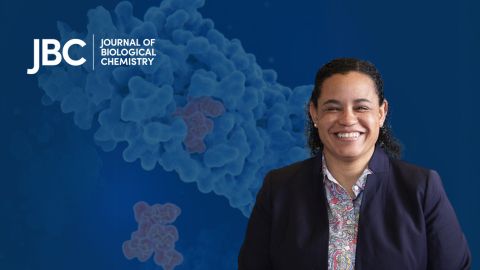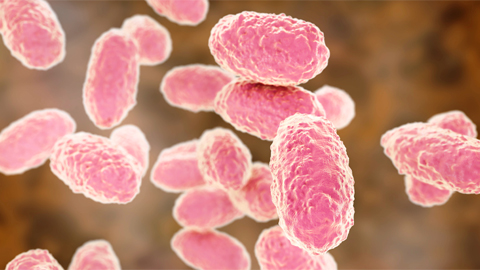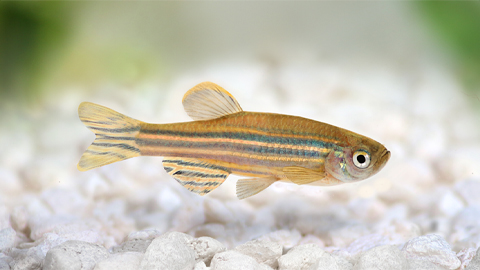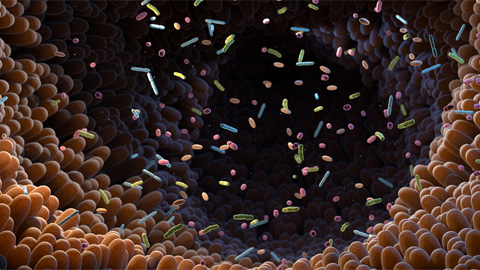From the Journals: JBC
An Alzheimer’s disease neuronal traffic jam. Mutant Rab35 linked to neurodevelopment disorder. Is ORMDL3 a new drug target for ulcerative colitis? Read about papers on these topics recently published in the Journal of Biological Chemistry.
Alzheimer’s disease neuronal traffic jam
According to the Centers for Disease Control and Prevention, Alzheimer’s disease, or AD, is the most common type of dementia in the U.S. and is characterized by progressive memory loss. It is caused by the aggregation of abnormal, pathogenic beta-amyloid, or Aβ, and tau proteins. After cleavage of the Aβ precursor, β-amyloid precursor protein, or APP, Aβ aggregates in the brain and forms plaques, which are hallmarks of AD.

The human brain contains billions of neurons, responsible for sending signals throughout the body. Neurons have long extensions called axons, which transport cargo such as proteins, RNA and organelles. The axons serve as the cellular network of highways, shuttling cargo back and forth using cellular vehicles called motor proteins, including dynein. Prior studies suggest that axonal transport is disrupted in AD. However, scientists know little about the mechanisms behind impaired transport, and how it affects disease progression.
In a recent study in the Journal of Biological Chemistry, Monica Feole of Masaryk University in the Czech Republic and an international team studied a rare mutation in APP, isolated from a Swedish familial AD cohort, to examine if the mutant affects axonal transport and disease pathology. They transfected mature human neurons with either normal APP or Swedish variant APP and tracked their axonal transport. The team found that the Swedish variant APP transport stalled for longer intervals and favored movement toward the neuron's cell body compared to the normal APP, which is often located at the axon terminals. They further showed that the Swedish variant APP has an increased binding affinity for dynactin, a protein that activates the dynein motor, which promotes transport back to the cell body. Further, the researchers discovered that the Swedish variant flips the transport direction of organelles such as endosomes and lysosomes along the axons, which leads to enlarged endosomal accumulation in the axons.
This study broadens the knowledge of how cellular highways, or axons, get clogged in AD and their role in disease progression. Further research is needed to assess if interventions in the axonal transport pathway may be able to alleviate AD.
Mutant Rab35 linked to neurodevelopment disorder
Infants with genetic mutations are often born healthy. But, as they grow, neurological symptoms can develop and delay developmental milestones. In most cases, the journey to find an accurate diagnosis is a winding path that delays timely treatment and causes emotional, mental and financial stress. Early intervention and access to genetic sequencing could help reduce the difficulty of this diagnostic odyssey.
In a recent study in the Journal of Biological Chemistry, Adriana Aguila of McGill University and a multinational team sequenced the protein-coding regions of the genome of a 2.5-year-old patient with neurodevelopmental defects, including the inability to move or speak normally. They identified a mutation in the RAB35 gene, which controls membrane transport, cell polarity, cell division and formation of thin, hair-like cellular structures called cilia that aid in cellular movement. Alterations in Rab35 function are known to cause glioblastoma and neurodegenerative diseases.
Upon structural analysis of the protein, the scientists found that the specific mutation locks Rab35 in an inactive state, inhibiting its interaction with other proteins, such as OCRL and MICAL1. Overexpression of the mutant Rab35 increases the activity of a protein involved in vesicular transport, Arf6, compared to the cells with normal Rab35, which leads to a decrease in the number and length of cilia.
The study's findings suggest that altered Rab35 function can lead to ciliary defects and may cause neurodevelopmental symptoms, such as structural brain abnormalities, hearing and vision defects and perturbed muscle tone observed in the patient. Further research is needed to investigate other patients with similar mutations in RAB35.
ORMDL3: New drug target for ulcerative colitis?
Ulcerative colitis, or UC, is an inflammatory bowel disease that causes large intestinal ulcers, diarrhea, bloody stool and abdominal cramping. Often, acute symptomatic episodes are followed by chronic asymptomatic periods or remissions. Current UC treatments aim to increase the remission period and manage symptoms. Previously, large-scale studies comparing the genomes of UC patients with healthy controls identified ORMDL sphingolipid biosynthesis regulator, or ORMDL3, as a risk factor for developing UC. However, how it contributes to disease pathology is unknown.
Jyotsna Sharma of the Central Drug Research Institute, India, and their team provide initial insights into the knowledge gap in a recent study in the Journal of Biological Chemistry. By comparing the colon biopsy samples from UC patients and control, the scientists found that high ORMDL3 levels cause an increase in an inflammatory molecule, interleukin-1β, or IL-1β. Next, they reduced the levels of ORMDL3 in human macrophages using silencing RNA and observed a corresponding decrease in the levels of IL-1β, confirming the role of ORMDL3 in promoting inflammation. Upon further investigation, the authors discovered that increased ORMDL3 expression causes mitochondrial fragmentation and increased contact with the endoplasmic reticulum membrane, which activates a driver of inflammation — a protein complex called the NLRP3 inflammasome.
To confirm their findings in a chemically induced colitis mouse model, the team reduced ORMDL3 levels using small hairpin RNA and observed a decrease in IL-1β levels as well as disease severity relative to controls. This study sheds light on the role of ORMDL3 in promoting inflammation during UC — suggesting that targeting this gene could open new avenues for treatment.
Enjoy reading ASBMB Today?
Become a member to receive the print edition four times a year and the digital edition monthly.
Learn moreGet the latest from ASBMB Today
Enter your email address, and we’ll send you a weekly email with recent articles, interviews and more.
Latest in Science
Science highlights or most popular articles

Meet Donita Brady
Donita Brady is an associate professor of cancer biology and an associate editor of the Journal of Biological Chemistry, who studies metalloallostery in cancer.

Glyco get-together exploring health and disease
Meet the co-chairs of the 2025 ASBMB meeting on O-GlcNAcylation to be held July 10–13, 2025, in Durham, North Carolina. Learn about the latest in the field and meet families affected by diseases associated with this pathway.

Targeting toxins to treat whooping cough
Scientists find that liver protein inhibits of pertussis toxin, offering a potential new treatment for bacterial respiratory disease. Read more about this recent study from the Journal of Biological Chemistry.

Elusive zebrafish enzyme in lipid secretion
Scientists discover that triacylglycerol synthesis enzyme drives lipoproteins secretion rather than lipid droplet storage. Read more about this recent study from the Journal of Biological Chemistry.

Scientists identify pan-cancer biomarkers
Researchers analyze protein and RNA data across 13 cancer types to find similarities that could improve cancer staging, prognosis and treatment strategies. Read about this recent article published in Molecular & Cellular Proteomics.

New mass spectrometry tool accurately identifies bacteria
Scientists develop a software tool to categorize microbe species and antibiotic resistance markers to aid clinical and environmental research. Read about this recent article published in Molecular & Cellular Proteomics.

